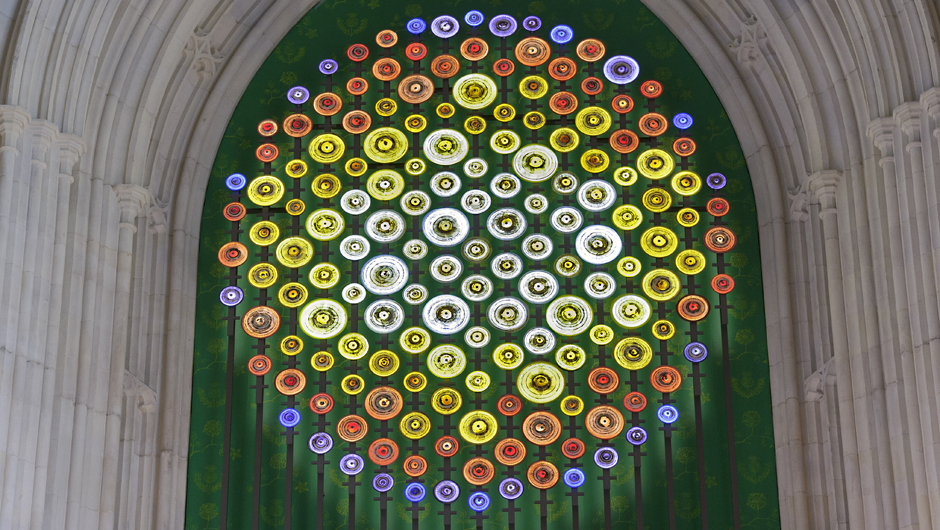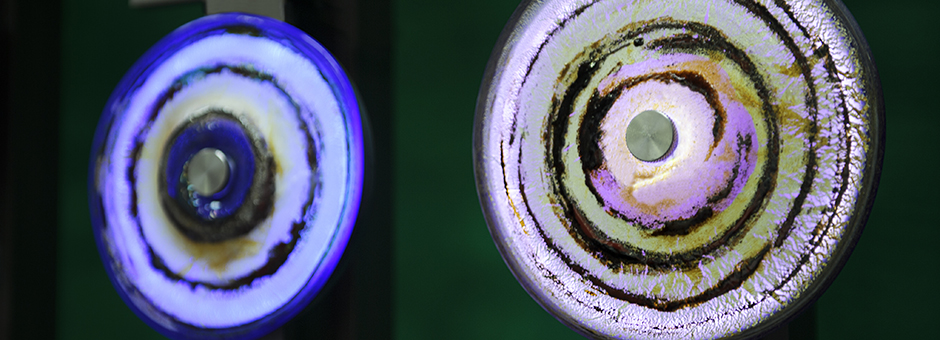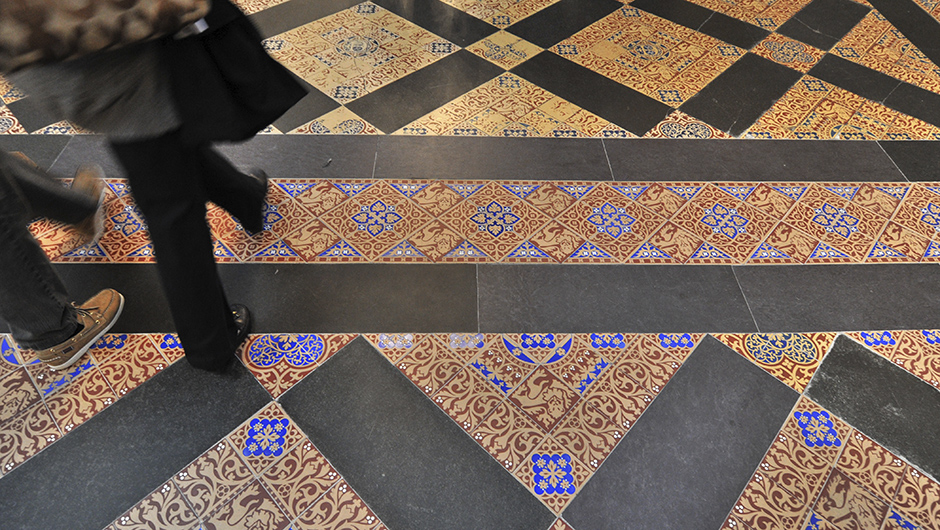Heritage Collections
Protecting a unique heritage collection
Many of these items are housed in the Palace of Westminster and the Restoration and Renewal Programme will organise their removal and safe return as well as safeguard those which must remain in the Palace during the building works.
There are several distinct collections which will have to be carefully managed: the Historic Furniture and Decorative Arts Collection; the Parliamentary Art Collection; the Architectural Fabric Collection and Libraries and Archives.
Historic Furniture and Decorative Arts Collection
Parliament's collection of 11,000 items of historic furniture, clocks, ceramics and silver are of international significance. Nearly two thirds of the collection was designed by Augustus Pugin, who created the original interior of the building. Much of the rest was designed by Giles Gilbert Scott when he was asked to rebuild and furnish the bombed areas of the House of Commons after the Second World War.
There are many unique objects in the collection such as the Monarch’s Throne in the Lords Chamber and House of Lords Clerk’s Table. A conference table designed by Gilbert Scott for the Prime Minister’s study in 1950 has a ribbon of triangles of 259 different types of wood around its edge, each donated by a member of the Commonwealth at that time. Other items, such as a table in the Speaker’s House, are important because they pre-date the fire which destroyed much of the medieval Palace of Westminster in 1834.
Parliamentary Art Collection
The Parliamentary Art Collection is the national collection documenting the history, work and people of Parliament and it comprises over 9,000 objects, such as sculpture, wall paintings, oil paintings and works on paper and textiles. Among the most famous pictures are the monumental water-glass paintings by Daniel Maclise in the Royal Gallery commemorating the Battle of Waterloo and the Death of Nelson at the Battle of Trafalgar.
As well as curating Victorian works of art, Parliament also commissions contemporary work. Above the entrance to St Stephen’s Hall is New Dawn by Mary Branson (2018), a site-specific contemporary glass and light installation, which was the first abstract contemporary artwork to be installed in the historic Palace. New Dawn commemorates the long campaign that led to some women gaining the vote in 1918, and all women in 1928.


Architectural Fabric Collection
The Architectural Fabric Collection numbers more than 5000 items designed for the Palace’s rich interiors and exterior. Now detached from the building, these include architectural stone details, metalwork, woodwork, floor-tile design, panelling, fabrics, and wallpaper.
When the Palace was built in the mid-1800s, Augustus Pugin was appointed Superintendent of the Works of Wood Carving, responsible for all the designs for wood, stained glass, tiles and metalwork. The richly decorated rooms on the Principal Floor best illustrate his enthusiasm for Gothic Revival design. Further decoration was added later by Charles Barry’s son, Edward, after his father’s death. Gilbert Scott continued the Gothic Revival theme in his interiors after the Second World War.
One of the most ubiquitous examples of architectural fabric are the Pugin-designed encaustic tiles. These often incorporate symbols like the Tudor Rose, the Fleur de Lis and the Portcullis and were laid throughout the Palace between 1847 and 1852. Many of the tiles that can be seen in the Principal Floor of the Palace today are 20th century replicas, with the worn originals archived in the Architectural Fabric Collection.

Libraries and Archives
The Parliamentary Archives collects, preserves and makes publicly accessible the records of UK Parliament, which are housed in the Victoria Tower. The House of Lords Library and House of Commons Library provide research and information services to members and their staff, including many books of historic value among their resources.
A House move like no other
The Restoration and Renewal Programme, working collaboratively with the collection custodians in the two Houses of Parliament, will co-ordinate the removal of all these cultural treasures and help ensure they are kept safe during the work on the Palace. A full assessment of the historic furniture and works of art across the Parliamentary Estate has already started.
While the Restoration and Renewal Programme will lead on the removal of the Historic Furniture and Decorative Arts Collection, the Parliamentary Art Collection and the Architectural Fabric Collection, the parliamentary authorities are leading on the relocation of the Libraries and Archives. Through the Archives Relocation Programme, some four million records are being transferred from their historic home in the Palace’s Victoria Tower to the National Archives in Kew.
Not all the heritage items will be moved however. For example, there are over 50 wall paintings and numerous marble and bronze statues which will need to be protected in situ. Many of the heritage items in the Palace are displayed in working areas or remain in everyday use and so the Programme also provides a unique opportunity for Parliament to undertake specialist conservation and cleaning.
